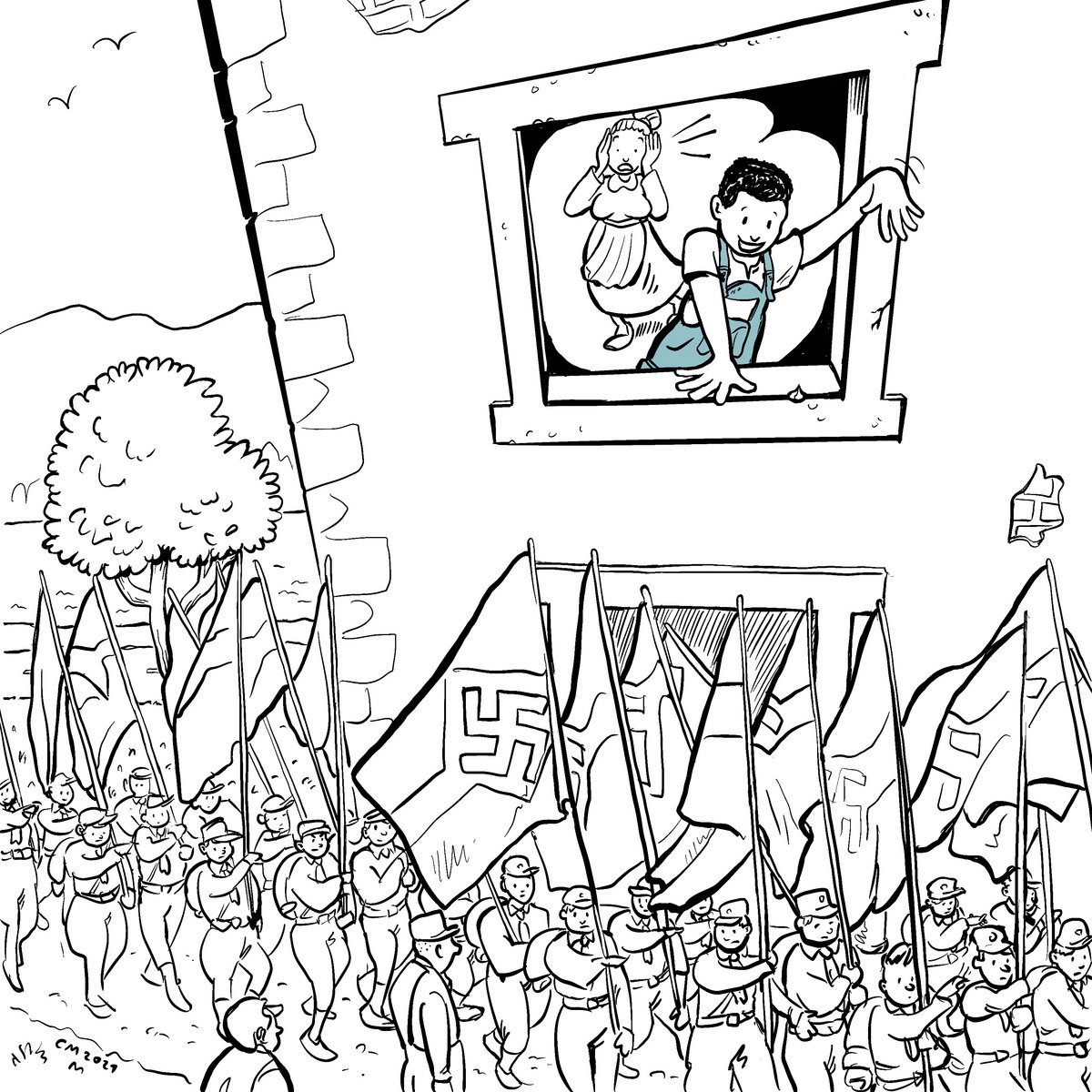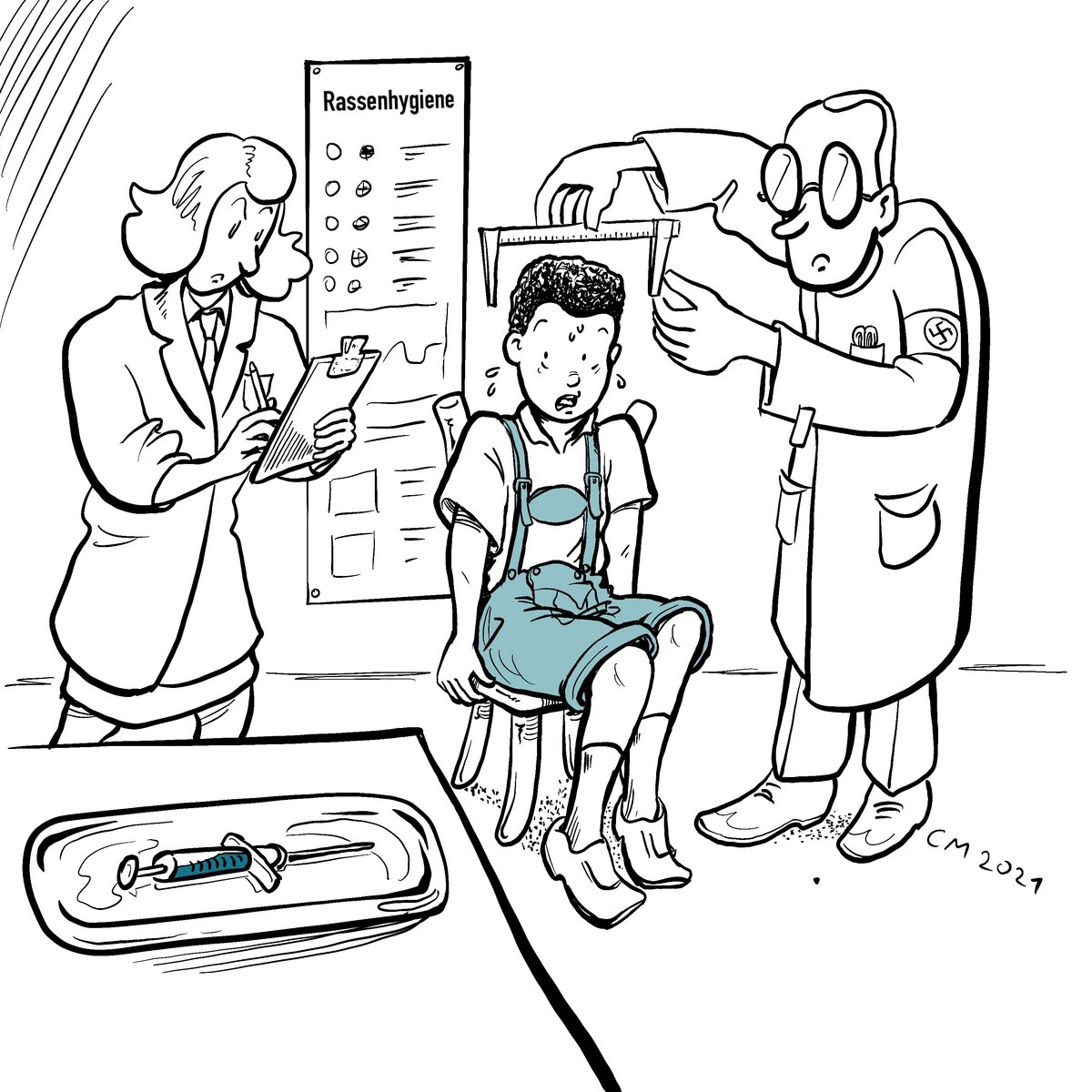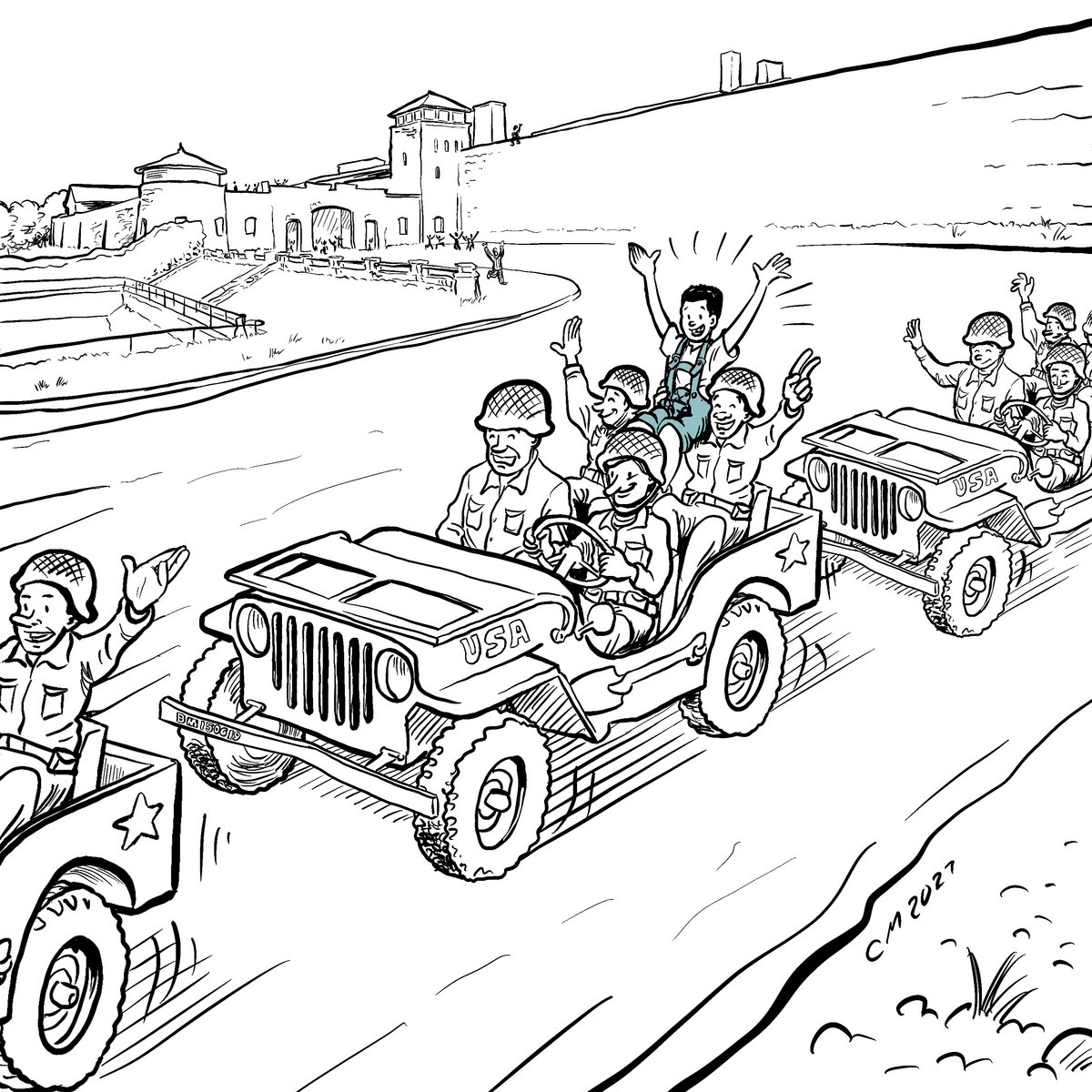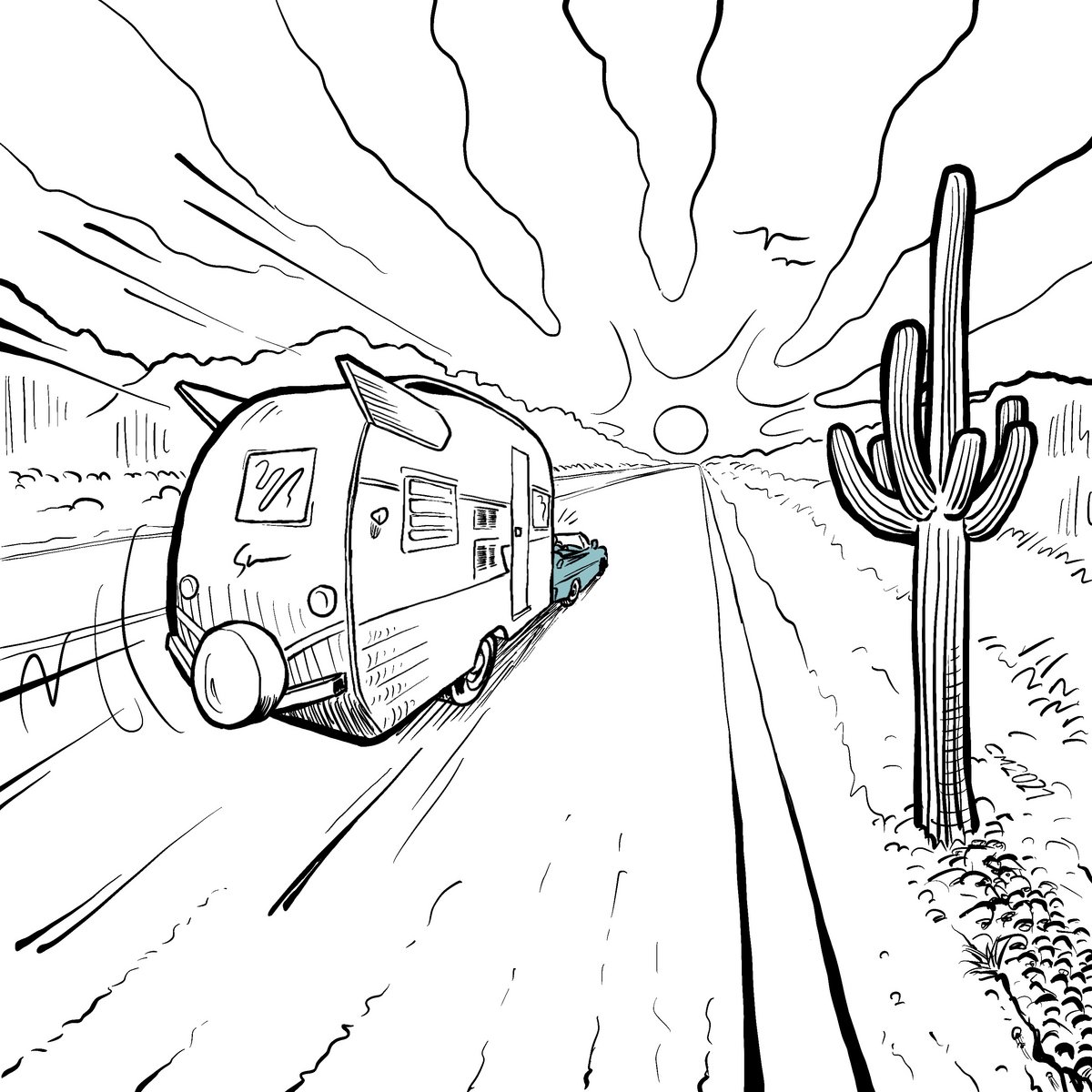In 1938, in a small town in Upper Austria, one of the many Nazi concentration camps was constructed. It was known as the Mauthausen concentration camp. It existed from 1938 to 1945. The camp was run and guarded by the SS. The people who were imprisoned here came from many countries in Europe: Poland, Russia, France, Italy, Germany, Austria and others. They were political opponents, belonged to marginalised groups (e.g. ‘criminals’, ‘asocials’) or were persecuted for anti-Semitic and racist reasons (e.g. Jews). Most of the prisoners were men, but there were also women and children.
In the Mauthausen quarry, the prisoners carried out hard forced labour. In the more than 40 subcamps (Gusen, Steyr, Linz, Ebensee, Vienna...), they were deployed in the arms industry. People lived in overcrowded accommodation. They were not given enough food and clothing, and they starved and died of diseases. SS men beat many prisoners to death, shot them or murdered them in the gas chamber at Mauthausen. In total, almost 200,000 people were imprisoned at Mauthausen and its subcamps. Half of them lost their lives.
The Mauthausen concentration camp was on a hill and could be seen for miles around. Many people were involved with the camp: they worked there, brought deliveries or knew SS men. Almost everyone knew about the death camp. Often, the SS men committed the crimes in full view of the population. On 5 May 1945, the Mauthausen concentration camp was liberated by US troops.
Here, you will read the story of a person who was connected with the Mauthausen concentration camp.
Achmed Kranzmayr
Text: Jutta Steinmetz, Bernhard Wahl – Illustration: Michael Car

Achmed Kranzmayr is born in 1932 to unmarried parents. His mother, who lives in Vienna, gives him away. Achmed has little contact with her during his life. He never meets his father. People tell him that his father is an African-American jazz musician or an Egyptian. Achmed grows up in the town of Mauthausen in Schloss Pragstein with his grandmother, who is his closest relative.
To begin with, Achmed’s darker skin tone does not play a major role for him and the people around him. He is popular with the locals. Achmed has many friends, goes to school and has a lovely childhood. He often spends entire days in the surrounding fields and in the forest climbing tall trees.
With the ‘Anschluss’ (‘Annexation’) of Austria in 1938, the country becomes part of the Nazi German Reich. The disparagement that people of colour have experienced in Europe for centuries escalates into extreme racism under National Socialism.

To ensure the ‘purity of German blood’, the Nazis pass the Nuremberg Laws, which forbid marriages and sexual relations between ‘Aryans’ and ‘non-Aryans’ – meaning Jews and people of colour. In the Nazi German ‘Volksgemeinschaft’ (‘people’s community’), Achmed is considered ‘undesirable’.
At first, he seems to have some protection, as his grandmother works as a servant in the household of the high-ranking SS officer Georg Bachmayer, the notorious ‘Schutzhaftlagerführer’ at the nearby Mauthausen concentration camp. Achmed knows Bachmayer and often plays with his daughters. Achmed also knows Siegfried, the son of the camp commander Franz Ziereis; they sit next to each other at school. One time, Siegfried invites Achmed to go up to the camp together, but his grandmother always fears the worst and stops this from happening. He spends a lot of time near the Danube with the children who live around him at Schloss Pragstein. Near the river, he also sees concentration camp prisoners at work.
But it becomes increasingly difficult for Achmed to make new friends as he is forbidden from taking part in all social events. So he stands at the open window and looks down on the street as the Hitler Youth hold their marches. He watches the boys marching and longs to join them. Because of his origins, he is not allowed to join a Nazi organisation.

In 1941, Achmed is summoned to Vienna to the Main Health Office. He is considered to be an ‘artfremder Mischling’ (‘foreign half-caste’) and so has to be measured and assigned to a ‘race’. The result of this examination is that he is a ‘Negermischling’ (‘half-caste negro’). A few weeks later, he is summoned once again. Nine-year-old Achmed is made infertile by an injection into his testicles – but he only finds out about this many years later.
He is no longer allowed to go to the cinema, and his grandmother forbids him from going to football games, which take place on the SS sports field near the Mauthausen concentration camp. Ultimately, he is not allowed to continue onto secondary school. His grandmother tries to organise private tutors for him, but most of them do not dare to teach him. There is one music teacher who teaches him to play the zither.
Achmed is particularly hurt when even his mother disowns him. When he visits her once in Vienna and there is a knock at the door, she locks him in the bathroom so that no one sees the ‘dark-skinned boy’ with her.
On 5 May 1945, the Mauthausen concentration camp is liberated by the Americans. The American soldiers who are now in the village of Mauthausen often give Achmed presents and let him ride on their jeeps. He becomes a kind of mascot for them.

In the post-war period, Achmed Kranzmayr has a lot of trouble finding work, as he was not able to obtain a secondary school leaving certificate during the Nazi era. And so he has fewer opportunities throughout his professional life. Not until later does he manage to get his driving licence. He keeps his head above water by doing unskilled labour. Eventually, he does make it to the position of crane driver in nearby Ennshafen – he is really proud of this high point in his career. He is also politically involved in the local Social Democratic Party.
Kranzmayr marries three times; his third wife is called Martha. None of the marriages result in children, a consequence of the fact that Achmed was sterilised as a boy by the Nazi regime. Although he is a victim of Nazism, he does not receive regular monthly support from the Republic of Austria. He is awarded a one-off compensation payment of approximately €5,000.
Even after the war, Achmed Kranzmayr is repeatedly discriminated against because of the colour of his skin and his first name; he experiences everyday racism. But sometimes, he himself complains about the many Turkish people who now live in Mauthausen.

Kranzmayr wants to see the world. He travels around for many years in his mobile home, including to the USA. But he returns to Mauthausen and, aside from short stays elsewhere, he lives in Schloss Pragstein for more than 70 years. He is a skilled craftsman and renovates his flat himself.
Achmed Kranzmayr dies in Mauthausen in 2011.
- 1932 Achmed Kranzmayr's birth
- 1933 30 January, Adolf Hitler becomes Reich Chancellor in Germany
- 1938 12 March, ‘Anschluss’ (‘Annexation’) of Austria to Nazi Germany
- 8 August, construction starts on the Mauthausen concentration camp
- 1938 Achmed is not allowed to join any Nazi organisations
- 1939 1 September, start of the Second World War
- 1941 Achmed is examined at the Main Health Office
- 1945 5 May, Mauthausen concentration camp is liberated by the US Army
- 1945 Achmed becomes a mascot for the US soldiers
- 1945 8 May, Nazi Germany surrenders; end of the Second World War in Europe
- in the years during his active work life Works his way up from unskilled labourer to crane driver
- 2011 Achmed Kranzmayr dies in Mauthausen
Further reflection in groups...
Achmed’s skin tone is darker than the other children in Mauthausen. Before the Nazi era, it doesn’t matter much. He has many friends and is popular in the village. What changes for Achmed when the Nazis come to power?
Achmed is measured at the Main Health Office in Vienna and categorised as a ‘Negermischling’ (‘half-caste negro’). What consequences does this have for the rest of his life?
The Mauthausen concentration camp was liberated by American soldiers. During your visit to the Memorial, what do you see that makes you think of the liberation of the camp?
Achmed is often allowed to ride with the American soldiers in their jeep. Why do you think they let Achmed and not the other children ride along with them?